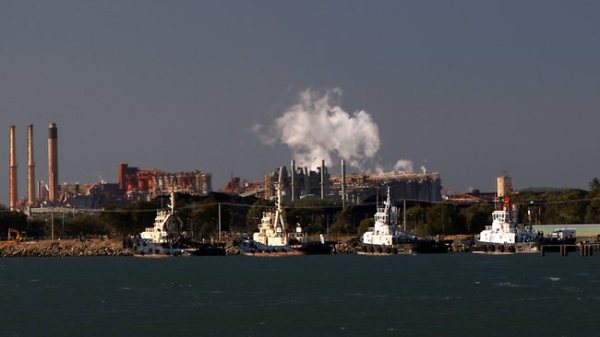Profitable Ecosystems: A Long Term Alternative to Over Development
Suggesting that companies use sustainable practices as anything other than a public relations or marketing tool and the idea will be ridiculed. The same profits cannot be made through sustainable practices. Talk to the same companies about investing in a resource that has both scarcity value and infinite reserves and they will probably wet their pants. This valuable resource can maintain jobs and profits for generations to come, opposed to the short-term mega profits. Magnates are likely to clam up at this point, but our waterways and costal ecosystems are more economically profitable if they are conserved. The images on postcards must be maintained. Pictures of dredged canals, bleached coral and mounds of upturned clay don’t sell. Consider the outcome if the Great Barrier Reef was mined for limestone and drilled for oil in the late 1960s.
The Wildlife Preservation Society of Queensland’s foresight in lobbying against development means the Great Barrier Reef is one of Queensland’s most profitable tourist destinations and one of Australia’s most significant selling points. Environmental protection is by definition conservative. In the long-term, pristine and unique environments will make more profit as long as they are conserved; consider them as an investment in a natural resource. Current plans to construct the worlds biggest coal port on Abott point near Bowen in Queensland needs to be assessed with the utmost caution. The move has created a stir both at home and overseas, leading UNESCO to consider listing The Great Barrier Reef, one of the seven wonders of the world, on their endangered list.
Expansion of the port would mean that 3 million tonnes of mud will be dredged and dumped nearby. Commercial fishermen were asked to assist finding suitable dumping areas and are yet to reach a consensus about where to dump the waste without contaminating their catches. Developing the area places the jobs of 61,000 people at risk, these people make living showing off the Reef to tourists. Like the economics of this region, the ecology is also fragile. The increased traffic from tankers would mean greater disruption of sediment creating prime conditions for the spread of the Crown-of-thorns starfish which, along with storm damage and coral bleaching, has now lead to a loss of half the Reefs natural coral cover. Occurrences like the Chinese coal carrier incident, the Shen Neng 1, which put a three-kilometer scar on the worlds largest living organism would be alarmingly more common. The decision to expand the port at Abbot Point is a critical juncture in the health of our marine parks, setting a precedent for future generations. The Australian government should not pursue the economic interests of foreign companies over the environmental wealth of the nation.
Pragmatic solutions and new approaches are needed to preserve the abundance we have, while tapping into our wealth of thousands of kilometers of coastline, potential Byron Bays and Arlie Beaches waiting for development. These destinations are world-renowned. Speak to groups of travellers abroad and they will wax lyrical about the veritable utopia and natural beauty of Byron Bay, which is on the wish lists of travelers the world over. Travelers are willing to risk steepening exchange rates and almost certain shark attacks to spend a moment on the sand in Byron.
It has been twelve months since Gold Coast Mayor Tom Tate in partnership with Singaporean firm Sembawang aimed to settle a development deal for a cruise ship terminal on Wave Break Island, endangering the environmental quality of a tourist Mecca, who’s major asset, apart from sunlight is white sand and crystal clear water.
At the time, Mr Tate said that the move would be great for the local economy as cruise ship passengers would spend an estimated $175 a day during terminal stopovers. Annually he has said that the profits could range from $20-60million dollars. However there was no guarantee or agreement with cruise companies to put the terminal on their itineraries.
Around the same time a Griffith University report valued the South Stradbroke surf industry alone to be worth $18-30 million dollars each year. The report did not include the millions of dollars in revenue created by recreational and commercial fishing, diving and boating.
Intensive and ongoing dredging of the Southport Seaway would be needed year-round, to facilitate cruise ships. This would cost between $6-15 million per annum, results would have been similar, much worse than the effects in Gladstone Harbour. Dredging would devastate the marine superhighway, home to 450 species of aquatic life and almost mythical dugong are seen. Even if an unprofitable terminal development were to go ahead, there would be no appeal to stop over in a muddy port, stripped of its natural beauty.
The Gold Coast boom of the 1980s may be well and truly over and Australian’s are increasingly taking advantage of cheap airfares to South East Asia despite this tourism in Queensland is still growing. The growth in tourism from Chinese visitors, a result of our exports threatens the same natural beauty they come to enjoy. With global industrialization, we must conserve and innovate resources and look at ways of prudently managing the coastal regions we build our cities around. Queensland has heavily developed regions yet pristine pockets exist near by that show how they can be highly profitable. We should acknowledge the foresight that previous generations didn’t have. The choice is now ours and is becoming increasingly urgent. We can either have one big economic sugar hit to leaving us with festering cavities, or a picture perfect economy with multiple uses that never fails to sell postcards.

